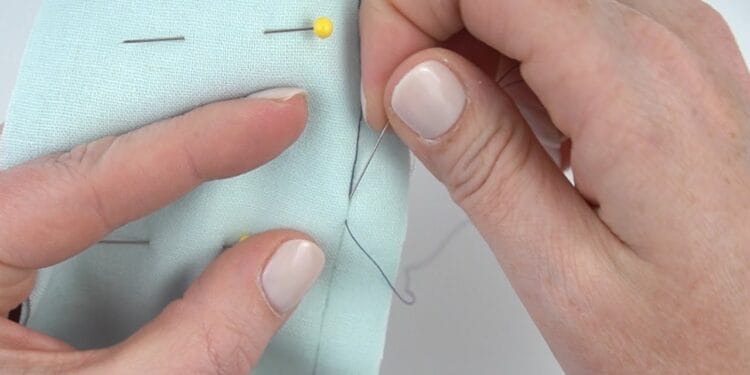In an era where fast fashion dominates, the age-old craft of hand sewing emerges as a beacon of sustainability and personal expression. This traditional technique, once a necessity, has found new life in today’s DIY culture and the growing sustainable fashion movement. Hand sewing offers an intimate connection with our garments, allowing for customizations and repairs that extend the life of clothing far beyond that of mass-produced items. Its relevance has only grown, as more individuals seek ways to minimize their environmental impact while nurturing their creativity. By embracing hand sewing, we not only pay homage to a timeless art but also contribute to a more sustainable and personalized approach to fashion.
Key Takeaways
- Importance of Mastery: Learning hand sewing techniques is crucial for anyone looking to create durable, high-quality garments or to personalize and repair existing pieces, contributing to a more sustainable lifestyle.
- Key Tools and Materials: Essential items include a variety of needles and threads suitable for different fabrics and projects, sharp fabric scissors for clean cuts, and marking tools for precision.
- Basic Stitches: Mastering a few basic stitches, such as the running stitch, backstitch, and slip stitch, provides a solid foundation for tackling a wide range of sewing projects.
Essential Hand Sewing Tools and Materials
- Needles: The cornerstone of hand sewing, needles come in various sizes and types, each designed for specific fabrics and tasks. For delicate silks and lightweight fabrics, slender, sharp needles are best, while thicker, more robust needles suit heavy materials like denim or canvas. Understanding the nuances of needle selection can significantly impact the quality and ease of your sewing projects.
- Thread: Selecting the right thread is just as crucial as choosing the appropriate needle. The material (cotton, polyester, silk) and weight of the thread should complement the fabric being sewn. A mismatch can lead to weak seams or damaged fabric, so it’s vital to match the thread to the project’s needs.
- Scissors: A pair of sharp fabric scissors is indispensable for clean, precise cuts. Dull scissors can damage fabric and make sewing more difficult, underscoring the importance of investing in a high-quality pair specifically designed for cutting textiles.
- Thimbles and Protective Gear: Thimbles protect your fingers from needle pricks and enable you to apply more force when sewing through tough fabrics. Other protective gear might include finger cots and leather pads, depending on your sensitivity and the project’s demands.
- Marking Tools: Precision in marking is essential for accurate cutting and sewing. Tailor’s chalk, disappearing ink pens, and markers designed for fabric allow for temporary guidelines that are invaluable for achieving professional results. Each tool has its advantages, depending on the fabric color and type, ensuring that your marks are visible without damaging the material.
Basic Hand Sewing Stitches
Mastering basic hand sewing stitches is fundamental for anyone looking to delve into the world of sewing, whether it’s for crafting, garment repair, or pursuing a more sustainable wardrobe. These stitches form the backbone of hand sewing, enabling both beginners and seasoned sewists to create durable and aesthetically pleasing projects. Here, we explore essential stitches, including the running stitch, backstitch, basting stitch, slip stitch, blind hem stitch, and the techniques for creating buttonholes and attaching buttons, offering a comprehensive guide to enhancing your sewing skills.
Running Stitch and Basting Stitch: The running stitch, one of the most basic and versatile hand sewing stitches, is perfect for seams, hems, and decorative elements. This stitch involves making a simple in-and-out motion with the needle, creating evenly spaced stitches along the fabric. The basting stitch, a longer version of the running stitch, is used for temporarily holding fabric together before final sewing, ideal for fitting adjustments or securing layers without leaving permanent marks.
Backstitch: Known for its strength and durability, the backstitch is essential for seams subjected to stress, such as on clothing or bags. To create a backstitch, make a small stitch forward, then bring the needle back a stitch length away, before stitching forward again, overlapping the first stitch. This technique forms a continuous, solid line of stitching, offering more reinforcement than a running stitch.
Slip Stitch and Blind Hem Stitch: For invisible seams and hems, the slip stitch and blind hem stitch are invaluable. The slip stitch is perfect for closing openings on turned seams or attaching two pieces of fabric edge-to-edge with minimal visibility. The blind hem stitch allows you to hem garments without the stitches being seen on the right side of the fabric, creating a clean, professional finish.
Buttonhole Stitch and Attaching Buttons: Crafting durable buttonholes and securely attaching buttons are crucial skills in garment making and repair. The buttonhole stitch, with its wrapped thread around the edge of the cut for the buttonhole, prevents fraying and adds strength. Attaching buttons involves creating a shank with the thread beneath the button to allow room for the fabric to sit between the button and garment, ensuring a functional and neat appearance.
Advanced Techniques and Embellishments
In the realm of hand sewing, mastering advanced techniques and embellishments can elevate your projects from basic to breathtaking. Appliqué, embroidery, and beading are not just decorative elements; they imbue your work with personal flair and sophistication.
Appliqué involves sewing smaller pieces of fabric onto a larger base fabric to create designs or patterns. This technique can add depth and interest to your projects, whether you’re adorning a quilt, a garment, or a tote bag. The key to successful appliqué is selecting the right fabric adhesive and stitch type (e.g., satin stitch or blanket stitch) to securely attach your designs while maintaining the fabric’s flexibility.
Embroidery, the art of decorating fabric with needle and thread, offers endless possibilities for personalization. From simple monograms to intricate landscapes, embroidery can bring a unique touch to any fabric item. Familiarize yourself with various stitches—such as the French knot, chain stitch, and feather stitch—to add texture and detail to your creations.
Beading adds sparkle and elegance to any sewing project. Whether creating jewelry, embellishing clothing, or decorating home accessories, the key to beading is choosing the right type of bead and thread for your fabric and design. A strong, thin needle and a steady hand will help you secure beads in place, creating patterns and accents that catch the eye.
Reinforcing Seams and Hems: For items that will endure frequent use or washing, reinforcing seams and hems is crucial. Techniques such as double stitching, using bias tape, or adding interfacing can provide extra durability and structure to your projects, ensuring they stand the test of time.
Tips for Neat and Durable Hand Sewn Projects
Creating neat and durable hand-sewn projects is a testament to skill and patience. Here are essential tips to elevate the quality of your work:
- Proper Threading and Knotting Techniques: Begin with a thread length no longer than 18 inches to prevent tangling. Use a knotting method suitable for your fabric and stitch type to secure the thread without creating bulk.
- Fabric Handling and Tension Management: Maintain consistent tension as you stitch to prevent puckering or loose stitches. Practice handling your fabric gently, allowing it to move freely without stretching or distorting.
- Seam Finishing Options: To achieve a professional look, choose seam finishing techniques that complement your fabric and project. Options include French seams for delicate fabrics, serged or zigzagged edges for fraying materials, and bias-bound seams for a polished appearance.
By mastering these advanced techniques and adhering to best practices for neatness and durability, you can transform your hand-sewn projects into works of art that are as functional as they are beautiful.
FAQs on Hand Sewing
How to Choose the Right Needle and Thread for Your Project?
Selecting the appropriate needle and thread is fundamental to the success of your hand sewing projects. The needle size should correspond to the fabric weight: finer needles for lightweight fabrics and larger needles for heavier materials. Similarly, the thread material and weight should match your fabric. Cotton thread is versatile for most cotton fabrics, while silk and synthetic threads are better suited for specific materials. A good rule of thumb is to test your needle and thread on a scrap piece of your project fabric to ensure they work well together.
What Are the Best Practices for Storing and Caring for Hand-Sewing Tools?
Proper storage and care extend the life of your hand-sewing tools. Keep needles in a secure case to prevent them from becoming dull or causing injury. Store scissors and other sharp tools separately, ideally in a protective sheath. Regularly clean and oil your scissors to keep them sharp and rust-free. Organize your threads and other small items in clear, labeled containers to prevent tangling and loss. A tidy, organized sewing space not only protects your tools but also makes your sewing experience more enjoyable.
How to Fix Common Hand Sewing Mistakes?
Mistakes are part of the learning process in hand sewing. For skipped stitches or uneven tension, carefully remove the problematic stitches using a seam ripper and re-sew the section, paying attention to maintaining even tension. If you encounter puckering fabric, ensure your stitches aren’t too tight and that you’re using the right needle size for your fabric. For knots and tangles in your thread, gently pull apart the thread using a needle, or cut the knot out and rethread your needle if necessary. Practice makes perfect, so don’t be discouraged by these common issues.
What is the Difference Between Sewing and Sowing?
The difference between sowing or sewing lies primarily in their meanings and applications, as they pertain to entirely different activities.
Sewing refers to the craft of joining or attaching objects using stitches made with a needle and thread. It is a textile art used in the making of garments, upholstery, and other fabric items. Sewing can be done by hand or with a sewing machine and involves various techniques and stitches to construct, mend, or decorate fabric or garments.
Sowing, on the other hand, is related to agriculture. It is the act of planting seeds by scattering them on the ground or placing them in the soil to grow. Sowing is a fundamental part of crop production and gardening, where the objective is to propagate plants for food, landscaping, or other purposes.



























